XML markup of taxonomic research and specimen data is a valuable tool for structuring the incessantly accumulating biodiversity knowledge. It allows for the opportunity to collectively use the currently fragmented information for more detailed analysis.
A new research paper, published in theBiodiversity Data Journal, demonstrates how XML markup using GoldenGATE can address the challenges presented by unstructured legacy data, like those presented in the widely used PDF format. The paper demonstrates how structured primary biodiversity data can be extracted from such legacy sources and aggregated with and jointly queried with data from other Darwin Core-compatible sources, to present a visualization of these data that can communicate key information contained in biodiversity literature.
Specimen data in taxonomic literature are among the highest quality primary biodiversity data. Innovative cybertaxonomic journals such as the Biodiversity Data Journal are using workflows that preserve the data's structure and semantic specificity and disseminate electronic content to aggregators and other users that makes these data reusable.
Such structure however is lost in traditional taxonomic publishing and currently, access to that resource is cumbersome, especially for non-specialist data consumers.
The question is: how do you manage this vast distributed repository of knowledge about biodiversity to make it easily available reusable for future research?
To answer this challenge this project queried XML structured articles published in Biodiversity Data Journal along with historical taxonomic literature marked up using GoldenGATE, and represents the results as a series of standard charts. XML structured documents are maintained by the Swiss NGO Plazi and are freely available online.
In such form, data associated with specimens becomes much more valuable as it can reveal key information about a particular species, and even about the scientists who investigate them. Charts indicate at a glance, for example, what time of year and elevation range a species is likely to be found at, useful information if you want to search for it in the field.
Our accumulated biodiversity knowledge includes an estimated 2-3 billion specimens in natural history collections and 500 million pages of printed text. These are the data we need to answer questions that are relevant to our world today, like setting conservation priorities and anticipating the effects of climate change on biodiversity and ecosystem functions that affect the lives of people.
"In short, we have half a billion pages worth of biodiversity knowledge and are just learning how to query it. The real power comes when data from many articles are combined, queried, and reused for new purposes. Potential applications span the scientific, policy, and public spheres. When we all have better access to the information that already exists in the global corpus of biodiversity literature, this helps us do a better job of exploring what we don't know and wisely applying what we do." explains the lead author Dr Jeremy Miller, Naturalis Biodiversity Center.
###
This project was supported by pro-iBiosphere and EU BON, two FP-7 (European Union Seventh Framework Programme, 2007-2013) grants (No 312848 and 308454).
Original source:
Miller J, Agosti D, Penev L, Sautter G, Georgiev T, Catapano T, Patterson D, King D, Pereira S, Vos R, Sierra S (2015) Integrating and visualizing primary data from prospective and legacy taxonomic literature. Biodiversity Data Journal 3: e5063. doi: 10.3897/BDJ.3.e5063
EU BON is happy to announce a new addition to our growing family of associated partners. In April 2015, the project has signed a Memorandum of Understanding with the German Federation for Biological Data (GFBio).
GFBio is a project that brings together national key players providing environmentally related biological data and services to develop the ‘German Federation for Biological Data' . The overall goal is to provide a sustainable, service oriented, national data infrastructure facilitating data sharing and stimulating data intensive science in the fields of biological and environmental research.

The federation will build on proven data archiving infrastructures and workflows such as those of PANGAEA for environmental data and the resources of Germany's major natural history collection data repositories. The new infrastructure will improve and integrate these existing components within a common technological and organizational framework.
A team representing the EU BON project travelled to the Joint Research Centre (Ispra, Italy) on 23-24 April 2015 to meet with representatives of various JRC Units dealing with biodiversity.
Working in close collaboration with policy Directorate-General, the JRC’s mission is to provide EU policies with independent, evidence-based scientific and technical support, throughout the whole policy cycle. Gregoire Dubois (JRC), who seats the Advisory board of the EU BON project, chaired the two-day meeting intended to establish concrete links between EU BON and JRC.
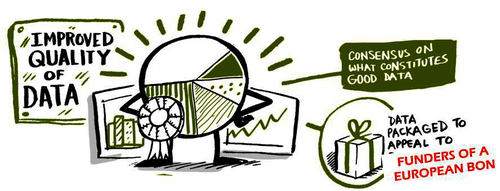
The objectives of the meeting were hence to become familiar with JRC’s biodiversity work, present the EU BON project to JRC, and above all identify overlapping interests, so as to develop cooperation between the EU BON project and JRC. Stimulated by a number of presentations from both sides, long discussions took place, mainly centred around how can JRC and EU BON work together to ensure the long-term presence of EU BON and its products.
The University of Cambridge invites for applications for a Research Associate to work on EU-BON, a major EU-funded research project, seeking to improve the use of biodiversity data in public policy. EU-BON will carry out research towards building a European gateway for biodiversity information, which will integrate a wide range of biodiversity data from on ground observations to remote sensing datasets and make it accessible for scientists, policy makers, and the public. The project is coordinated from the Berlin Natural History Museum with the University of Cambridge contribution being led Professor William Sutherland (Department of Zoology) and Dr Robert Doubleday (Centre for Science and Policy and Department of Geography). EU-BON started on 1 December 2012 and runs for 4.5 years.
The post The researcher will carry out research on how biodiversity data is currently used in European policy making and will contribute to analysis of the opportunities to increase its effective provision and use. Research methods are likely to combine qualitative and quantitative analysis and to focus on the use of biodiversity data in public policy contexts. The researcher will be expected to spend time working in both the Department of Zoology and the Centre for Science and Policy.
In addition to carrying out research on the use of biodiversity data in European policy making, the researcher will support Cambridge's contribution to EU BON as a whole. This will involve contributing to other workpackages as and when required. More information about EU BON can be found here:http://www.eubon.eu
Person Specification Applicants should have a PhD in a relevant field. Experience in both qualitative and quantitative analysis is desirable. Applicants should ideally have some first-hand experience of public policy processes and a willingness to travel within the European Union for research. Excellent organisational and communication skills will be essential in working as a successful part of this large, multi-partner and multinational team.
Any enquiries concerning the position can be made to Dr Robert Doubleday,rob.doubleday@csap.cam.ac.uk or Professor William Sutherland, w.sutherland@zoo.cam.ac.uk
Interviews for this post will take place on Thursday 18th June 2015.
To apply and for more information, please go to teh official job offer.
Reporting under policy instruments to inform on the trends in biodiversity requires information from a range of different elements of biodiversity, from genetically viable populations to the structure of ecosystems. A new research looks into the Essential Biodiversity Variables as an analytic framework to identify ways in which gaps between biodiversity data and policy reporting needs could be bridged. The study was published in theJournal of Applied Ecology.
The Essential Biodiversity Variables (EBVs, Pereira et al. 2013) which were previously developed by ecology experts in GEO BON, is as a list of the most essential elements that need to be monitored worldwide, if we want to know how biodiversity is really changing.Example of essential variables is the population abundances of species (like the Living Plant Index from the WWF) or the extent of habitat fragmentation.
In the recently published study, funded by the EU FP7 project EU BON, scientists used the identified EBVs as a framework to analyse the gaps between the biodiversity objectives stated in international policy instruments, the indicators used to develop the related policy reports and the data that is actually available to quantify indicators and proxies.
Results of the recently published study show:
1) which aspects of biodiversity are being asked for the reporting on policy instruments. Based on this knowledge,it became apparent which aspects of biodiversity are not often asked to be in these reports and thus for which aspects policy makers are unlikely to receive information. For example information on the changes in the EBV class "Genetic Composition", was not often asked in reports, not often used in indicators and little data is directly available.
2) which of these biodiversity aspects actually end up being in the CBD reports, because scientists were able to quantify indicators. For instance, information for Ecosystem function is often asked for, but is not represented by many indicators.
3) for some EBVs data seems available to improve current reporting efforts, for instance for indicators on Ecosystem structure.
Additionally, the study identified which potentially available data could be used to improve existing indicators by adding more taxa or spatial or temporal coverage. This analysis also showed that the EBVs will not cover all the information asked in policy reporting. This is because the policy objectives also include things related to awareness raising of the public and the implementation of protection measures - aspects which are not within the scope of EBVs.
"Analytical properties, such as an identification of which data and indicators are relevant per EBV, will need to be addressed before EBVs can actually become operational and facilitate the integration of data flows for monitoring and reporting." commented the lead author of the study Dr. Ilse Geijzendorffer.
###
Original Source:
Geijzendorffer, I.R., Regan, E.C., Pereira, H. M., Brotons, L., Brummitt, N., Gavish, Y., Haase, P., Martin, C.S., Mihoub, J.-B., Secades, C., Schmeller, D.S., Stoll, S., Wetzel, F. T., & Walters, M.,Journal of Applied Ecology http://onlinelibrary.
Additional information:
Pereira, H.M., Ferrier, S., Walters, M., Geller, G.N., Jongman, R.H.G., Scholes, R.J. M. W. Bruford, Brummitt, N. , Butchart, S.H.M., Cardoso, A.C., Coops, N.C., Dulloo, E., Faith, D.P., Freyhof, J., Gregory, R.D., Heip, C., Höft, R., Hurtt, G., Jetz, W., Karp, D.S., McGeoch, M.A., Obura, D., Onoda, Y., Pettorelli, N., Reyers, B., Sayre, R., Scharlemann, J. P. W., Stuart, S.N., Turak, E., Walpole, M., & Wegmann, M. (2013) Essential biodiversity variables. Science, 339, 277-278.
EU BON and CETAF informatics groups had an astronomically successful meeting at Digitarium in Joensuu, Finland, 17-20 March 2015. The event coincided with solar eclipse and show of the decade for northern lights.
Major progress in data standards for information exchange took place during the week when the Biodiversity Information Standards TDWG organisation announced ratification of five new terms for quantitative biodiversity data, which had been proposed by the EU BON project one year earlier. The new terms include, in particular, organismQuantity and sampleSizeValue. This allows for exchange of ecological data in much wider scale than what has been possible until now. The participants of the meeting applauded for this occasion.

Northern lights over Joensuu Science Park 2015-03-18. Photo: Riitta Tegelberg
The meeting included a training workshop on new data sharing tools, and working sessions for designing the EU BON portal, which will allow using biodiversity observation data in research.
The 40 attendees came from 18 different countries.

Participants at the meeting.
During the meeting the attendees also were given presentations and demonstrations of Digitarium's equipment and methods for high-performance digitisation.
New research published with the support of the FP7 large-scale bioinformatics project Building the European Biodiversity Observation Network (EU BON) and the Alien Challenge COST action reveals the importance of open data in the study and control of invasive alien species. The study was published online in open access in the journal Management of Biological Invasions.
Invasive alien species cause a wide variety of problems, including issues related to conservation; to human and animal health; to agriculture and to fisheries management. But how can science be useful to manage such potential issues?
"To advise policy makers and inform land managers on the dangers posed by and how to fight alien species we need to understand the invasion process. Ideally, we would like to be able to predict the causes, routes and progression of invasions." explains Dr. Quentin Groom, Botanic Garden Meise, Belgium.
Recently, several research groups have pioneered the process of "Horizon Scanning" for new alien species, also there have been parallel developments in the creation of dynamic ecological models to predict invasions. However, the greatest limitation to these advances is the lack of suitable data.
"The problem of invasive species is international and rapidly changing. Data are required from an extensive area, for many species and for a long period but what is currently available is patchy and often inaccessible. We argue for the importance of open data to tackle the problem of invasive alien species." explains Dr. Groom.
This new research reviews why access to data are so important to invasive alien species research and gives an overview of the reasons why data are unavailable to researchers. Currently access to data is patchy and is restricted in many ways:
- Legally, the use of restrictive data licensing blocks its use.
- Technically, many software systems don't adequately support sharing, particularly in their provision of unique identifiers.
- Culturally, data secrecy is the default position for most organizations.

Currently invasive species data is patchy and often restricted legally, through the use of restrictive data licensing. Credit: Peter Desmet
Gradually, data are becoming more accessible and attitudes towards data access are changing. The advent of data publications allows researchers to attract citations from their data, while simultaneously making their data accessible and discoverable.
The community of biodiversity observers is highly fragmented and the creation of a European biodiversity network will improve communication so that grassroots biodiversity surveyors will understand issues of data sharing, citation and licensing that are so critical for a rapid response to invasive species.
###
Original Source:
Groom QJ, Desmet P, Vanderhoeven S & Adriaens T (2015) The importance of open data for invasive alien species research, policy and management. Management of Biological Invasions 6: in press. doi: 10.3391/mbi.2015.6.2.02
The second WP6 and 7 workshop was organised by CNRS and took place from 16 to 18 of February in Aix-en-Provence, France. During this meeting, partners brainstormed on possible cross work package papers, products and tasks. Partner’s enthusiasm for the ongoing work and possible impact of EU BON outputs fuelled energetic discussions.
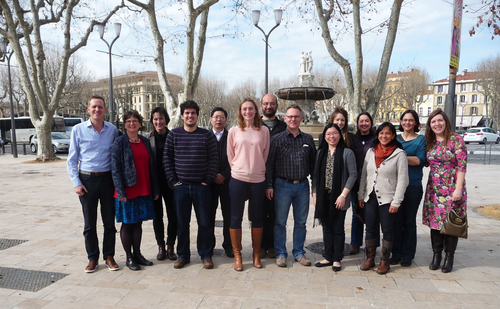
Participants at the workshop. Credit: Florian Wetzel
Topics on the agenda include:
The possibilities of visualisations like Aquamaps and Fishbase to provide information for Marine policy targets or for capacity building on marine biodiversity information. We were very happy to have Sandrine Vaz from IFREMER, Montpellier joining us as an expert on marine data and its policy context.
For the EU BON business plan, the next steps were defined for its development, part of which Pan Xingliang will explore in his masters project. One of the steps will include a strategy meeting with other initiatives and European projects that face the same challenge of ensuring life of their products and networks of knowledge after the project end date.
The objective of the third stakeholder round table was further defined based on lessons learned from previous stakeholder round tables and identifying the information needs from the data portal for EU BON from our EU BON test case study regions.
A recent paper by Duccio Rocchini et al. (2015) has been classified as the fourth hottest article in Ecological Informatics. The paper is part of the EU BON project, and discusses from a conceptual point of view, the potential of remote sensing in estimating biodiversity using various diversity indices, including alpha- and beta-diversity measurements.
Abstract:
Many geospatial tools have been advocated in spatial ecology to estimate biodiversity and its changes over space and time. Such information is essential in designing effective strategies for biodiversity conservation and management. Remote sensing is one of the most powerful approaches to identify biodiversity hotspots and predict changes in species composition in reduced time and costs. This is because, with respect to field-based methods, it allows to derive complete spatial coverages of the Earth surface under study in a short period of time. Furthermore, remote sensing provides repeated coverages of field sites, thus making studies of temporal changes in biodiversity possible. In this paper we discuss, from a conceptual point of view, the potential of remote sensing in estimating biodiversity using various diversity indices, including alpha- and beta-diversity measurements.
Original source:
Rocchini D, Hernández Stefanoni JL, He, KS (2015) Advancing species diversity estimate by remotely sensed proxies: a conceptual review. Ecological Informatics, 25: 22-28. doi:10.1016/j.ecoinf.2014.10.006
The second EU BON Roundtable took place on 27 November 2014 at the Museum für Naturkunde in Berlin. The workshop was dedicated to explore ways in which EU BON can support citizen science (CS) activities. Many partners and interested stakeholders participated, coming from different European research institutions, Natural History Museums, SMEs or representatives from European Institutions like European Commission (DG Research & Innovation and the Joint Research Centre) or the European Environmental Agency and EU-funded Citizen Observatories projects. On secondment to the Earth Observation Sector at DG Research and Innovation, European Commission, Jose-Miguel Rubio-Iglesias showed the possibilities of Citizen Science as one option to improve the science-society bridge. In the following interview he gives an overview of the topic covered and his participation at the round table.

Jose-Miguel Rubio-Iglesias gave a talk on improving the science-society-policy bridge by Citizen Science
Jose-Miguel Rubio-Iglesias, Policy Officer (Spanish National Centre for Geographic Information, on secondment to the European Commission)
Q: Where do you see the place of citizen science in the future of European research and innovation efforts?
A: I see a brilliant future of Citizen Science as a driver for research and innovation activities, especially in its shape of "Citizens' Observatories". The vertiginous increase in the use of mobile technologies, with a pervasive Internet accessible to everyone and social media usage at its peak, offers a world of opportunities for research and innovation in the domain of environmental monitoring technologies where citizens have a key role to play. Citizen science can also foster advancement in social innovation as these are normally collective actions carried out by citizens, sometimes in partnership with NGOs, researchers and public organisations, which are bringing benefits for the whole society. Furthermore, the European Union's Framework Programme for Research and Innovation, Horizon 2020, is already offering a framework to mainstream public engagement in science and research, from programming to implementation and evaluation, being citizen science a one of the key instruments to realise this objective. Data and information gathering, results interpretation and co-creation are examples of activities in which citizens can be involved, leading to different kinds of innovation, including social innovation.
Q: What are the success factors for citizen science? What are the challenges for Citizen Science on a European scale?
A: In my opinion there is no magic formula to achieve success in a citizen science activity, nor any plug-and-play solution. There are many variables that have to be considered, such as the thematic, spatial or temporal scope of the activity. But a common element that seems to be an ingredient for success is to plan carefully not only the process of engagement but the feedback mechanisms, so citizens realise their actions and the outcomes of what they have done are really being useful. Working on creating a strong perception of ownership is always a success factor on a voluntary initiative.
I see a number of challenges for Citizen Science at a European scale, especially, the need for a better coordination of the local and regional activities. This can avoid duplication of initiatives, foster best practices across activities and help position better citizen science vis-à-vis the EU and national and local governments, so citizen science can be higher up on their agendas. In this sense, I think the role of associations such as ECSA (European Citizen Science Association) is key in achieving this coordination.
Q: How can EU projects on biodiversity information like EU BON facilitate the process?
A: EU BON, like other EU projects which have biodiversity information as a focus, has an important role to make visible the knowledge treasured by citizen science groups. The European Biodiversity Portal, one of the EU BON main achievements, is a fantastic opportunity to open up the wealth of biodiversity data which has been collected by citizens throughout Europe, making it available for a better informed decision making in those areas in which biodiversity has a role.
Q: Where do you see the place of large European Earth observation projects such as EU BON in the global context?
A: The biodiversity information system resulting from EU BON is one of the main European contributions to GEO BON (GEO Biodiversity Observation Network), which is a flagship initiative of GEO (Group on Earth Observation). GEO BON is joining forces at international level to coordinate the activities relating to the Societal Benefit Area on Biodiversity of the Global Earth Observation System of Systems (GEOSS). Its main goals are to organize and improve terrestrial, freshwater and marine biodiversity observations globally and make their biodiversity data, information and forecasts more readily accessible to policymakers, managers, experts and other users. As EU BON is creating a stable and open-access platform for sharing biodiversity tools and data, taking stock of existing components such as LifeWatch or GBIF, this is clearly a step forward towards the fulfilment of the objectives of GEO BON.
At global level, EU BON and GEOBON are strategically positioned to contribute to delivery of data for the UN Convention on Biological Diversity (CBD) and the Intergovernmental Science-Policy Platform on Biodiversity and Ecosystem Services (IPBES).
Finally, together with EU BON, other large EU Earth Observation projects, such as SIGMA or Earth2Observe, are also providing an important contribution at global level to GEO, in this case to the GEO Societal Benefit Areas of Agriculture (GEO-GLAM) and Water respectively.
NOTE: The views expressed in this interview are only of the speaker and do not necessarily reflect the official opinion of the European Commission.
The 2nd EU BON training on data sharing tools will take place side by side to CETAF/EU BON informatics workshops (see full program and logistic details here). The event will be organised by UEF and Digitarium, EU BON consortium member and work package leader (WP2), in collaboration with CETAF ISTC and other EU BON work packages.
Next topics will be covered:
- Introduction to GEOSS, GEO BON, EU BON (Hannu Saarenmaa)
- Information architecture of EU BON (Antonio Garcia)
- Data standards, Darwin Core and extensions for sample-based quantitative data (Éamonn Ó Tuama)
- Demonstration of GBIF/EU BON IPT for monitoring networks (Larissa Smirnova and Franck Theeten)
- Practical exercise with sample dataset (Larissa Smirnova and Franck Theeten)
- Practical exercise with own data (all trainees)
The workshop will include lectures and hands-on work, so participants are required to bring their own laptops. We will provide information and instructions on software installations. If the participants want to install IPT tool themselves, they can read and learn how to de it here. For the practical exercises it’s recommended to bring own data (taxonomic, monitoring).
Place and date: Joensuu, Finland, 19 March 2015
Venue: Joensuu Science Park, Digitarium and the Conference Facility "Network Oasis"
To register, please fill in the registration form
Find the event in our calendar here.
UNEP-WCMC, Dutch Butterfly Conservation, and EU BON recently convened a workshop of 14 global experts from the field of butterfly monitoring, specifically the tropics and subtropics. The workshop has catalysed the process for the development of global butterfly monitoring guidelines and the creation of a new specialist butterfly monitoring group.
Hosted by GEO BON (Group on Earth Biodiversity Observation Network) at the offices of the German Centre for Integrative Biodiversity Research (iDiv) in Leipzig, Germany, the meeting took place on 8th and 9th December 2014. The global experts attending the meeting shared their significant experience and knowledge from the tropics, sub-tropics and deserts; including countries such as Papua New Guinea, Belize, Brazil, Colombia, USA, South Africa, Malaysia, and Liberia.

Blue Copper (Lycaena helle); Credit: Chris van Swaay
Butterfly populations have been monitored in Europe for over 35 years. This monitoring has used standardized protocols, produced long-term datasets, and has resulted in indicators tracking the changes in butterfly populations. These data are proving to be very valuable for informing decision-makers on biodiversity changes and are used at local, national and regional levels to inform conservation management decisions and policies. As a result of the success of schemes in Europe, butterfly monitoring is growing and is now being implemented in countries outside of Europe including North America and Israel using similar protocols.
However, the protocols for butterfly monitoring in temperate regions are not applicable in regions with high numbers of butterfly species such as the tropics. In these biomes methodologies such as fruit-bait traps, counts of puddling butterflies, and timed counts have been used. The aim of this meeting, therefore, was to agree a standard set of methodologies that could be applied globally and from which data could be aggregated through an Essential Biodiversity Variable into a Global Butterfly Indicator.
The main agenda items and points of discussion were an overview of current butterfly monitoring, structured by continent and habitat, with emphasis on the different protocols; steps to process count data into indicators and trends; essential variables required to measure changes in butterfly populations; compatibility of different protocols and the logistics of creating a global indicator; whether the entire species diversity should be measured or just a portion; and agreement on a standard set monitoring protocols.
This workshop has catalysed the development of a number of products, including: global butterfly monitoring guidelines; the development of a Global Butterfly Indicator; and a suite of scientific journal articles on butterfly monitoring in different regions of the world. The development of an Essential Biodiversity Variable (EBV) ‘butterfly population abundance’ that will facilitate the harmonisation of butterfly monitoring data from different habitat types and regions is also being developed. A new butterfly monitoring specialist group has also been established to provide support for practitioners working in the field of butterfly monitoring and to continue momentum from this workshop.
The standardization of monitoring protocols that can be implemented in any country is crucial for the robust estimation of butterfly populations globally to assess progress towards the 2020 targets of the Convention on Biological Diversity (CBD). These guidelines can also provide the foundation for developing scenarios for the future of butterfly populations under different policy and management options. The outcomes of this meeting provide a clear path to increased harmonization among the efforts of global butterfly experts in different regions and towards the establishment of a Global Butterfly Indicator.
We would like to thank GEO BON and EU BON for funding this meeting.

Participants of the butterfly monitoring experts meeting at iDiv, Leipzig, Germany, December 2014
A second WP4 (Link environment to biodiversity: analyses of patterns, processes and trends) meeting was held on 8 & 9 December 2014 in Brussels, to discuss progress towards objectives and set plans for future development.
Hot topics during the meeting were: GBIF data: who will use them, and how; development and use of methodology; collaboration between WP4 and the relevant WP3 (Improving tools and methods for data analysis and interface) and WP5 (EU BON testing and validation of concepts, tools, and services); as well ways to translate WP4 results for the use of policy and practice.
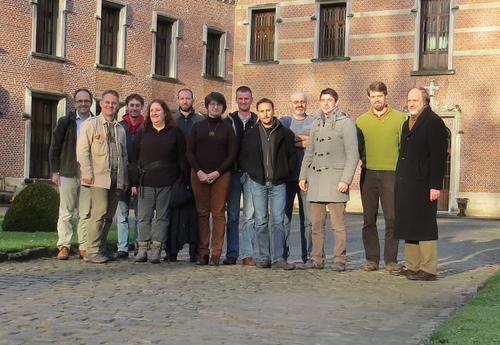
Image: Participants at the meeting; Credit: Dirk Schmeller
A Memorandum of Understanding (MoU) was signed at the second EU BON Stakeholder Roundtable on Citizen Science between Christoph Häuser, on behalf of EU BON, and Fermin Serrano Sanz, on behalf of the Citizen Science Project Socientize at the 27th of November 2014. The Roundtable on Citizen Science took place at the Museum für Naturkunde in Berlin, Germany and followed the General Assembly Meeting of the European Citizen Science Association.
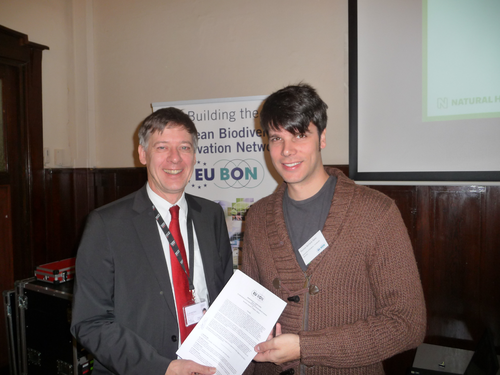
Signing the MoU: (left) Christoph Häuser, EU BON and (right) Fermin Serrano Sanz, Socientize
Socientize (Society as e-Infrastructure through technology, innovation and creativity) is a Citizen Science Project that was funded by the European Union. The project aims to coordinate agents involved in the citizen science process and to foster and promote the usage of citizen science infrastructures. There are several linkages between the citizen science related work of EU BON and Socientize (e.g. policy recommendations for citizen science) and by signing the MoU, a further exchange and follow-ups were agreed.
The second EU BON Roundtable took place on 27 November 2014 at the Museum für Naturkunde in Berlin. The workshop was dedicated to explore ways in which EU BON can support citizen science (CS) activities. EU BON is building a large integrated biodiversity information infrastructure in order to serve science, policy and administration as well as citizen scientists. Citizen scientists are important stakeholders, as they support the increase of knowledge in various aspects, they may debate research questions, most often they collect data, and they may interpret data and publish their results.
Many partners and interested stakeholders participated, coming from different European research institutions, Natural History Museums, SMEs or representatives from European Institutions like European Commission DG Research & Innovation, the European Environmental Agency or the JRC and EU-funded Citizen Science projects.
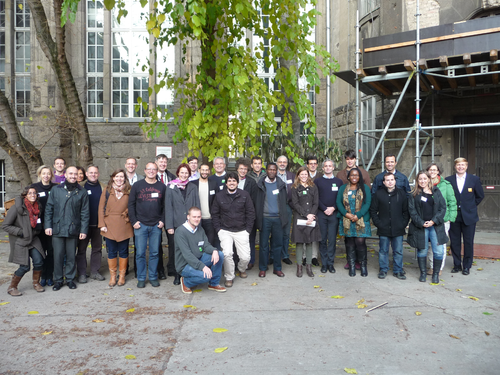
Participants at the 2nd EU BON Stakeholder Roundtable
The Citizen Science Roundtable started with a "Setting the scene" session where a welcome address was given by Katrin Vohland from the Museum für Naturkunde (MfN). In a brief introduction from a biodiversity data perspective, some gaps in current bio-diversity data were shown, for example the large data gaps in Eastern European data in plant datasets and the restricted access to many datasets. Christoph Häuser from the MfN outlined EU BON and its main activities in the field of Citizen Science.
As a representative from DG Research and Innovation from the European Commission, Jose-Miguel Rubio-Iglesias showed the possibilities of Citizen Science as one option to improve the science-society bridge. Lucy Robinson (ECSA/NHM London) focused on citizen science in Europe, its impact and development.
The next session targeted the question of how EU BON can possibly support data mobilization of and for citizen scientists. Antonio García Camacho from CSIC Donana showed, with a colleague from IBM, the prototype of the future EU BON data portal, to integrate biodiversity data/metadata sources into a single user interface. In another talk, Jaume Piera pointed out the requirements that exist in a CS portal, e.g. with regards to the role of citizen collaboration, the social media channels, and particularly the conceptual requirements. Important aspects here are for example that data access tracking has to be guaranteed, for giving credits to data producers and for keeping track of data use. Simao Belchior of the SME Simbiotica showed successful ways of visualizing georeferenced data, e.g. the mapping of pan-tropical forest clearing.
The next session called "A spotlight on some (meta)data provider" was started by Veljo Runnel who presented an assessment of Citizen Science involvement in biological research. Nils Valland described in his talk key success factors for citizen science and species occurrence data in Europe. Dirk Schmeller informed the audience about Volunteer Species Monitoring in Europe. He pointed out the need that governments should invest more to support and expand current monitoring initiatives. For example the EuMon project had documented 395 monitoring schemes for species, which represents a total annual cost of about €4 million, involving more than 46,000 persons devoting over 148,000 person-days/year to biodiversity monitoring activities.
In the "Synergies of European Citizen Science projects" session, presentations outlined of the main aims of several EU funded Citizen science projects (Citclops, COBWEB, Socientize). Pierre-Philippe Mathieu from the European Space Agency highlighted the new era for Earth Observation and links to Citizen Science projects. Siro Masinde from showed the Citizen Science activities of GBIF, which is one of the largest data providers of species occurrence records.
For more detailed information on the issues discussed, please see below the presentations from the meeting or contact us:
Dr. Katrin Vohland ( katrin.vohland@mfn-berlin.de)
Dr. Florian Wetzel (florian.wetzel@mfn-berlin.de)
PRESENTATIONS
1.Rubio-Iglesias - Citizen Science as science-society bridge
3. Robinson - Citizen science in Europe
4. Camacho - EU BON biodiversity portal
5. Piera - Requirements for the EU BON biodiversity
6. Belchior - Fall of data portals and future of data workflows
7. Runnel - Assessing Citizen Schience involvement
8. Arvanitidis - Crowdsourcing initiatives in the Mediterranean Basin
9. Valland - Key success factors of citizen science
10. Schmeller - Volunteer Species Monitoring
11. Mathieu - Crowd Sourcing for Space Science
15. Masinde - GBIF, plans for integrating Citizen Science data
Selection of pictures from the meeting:

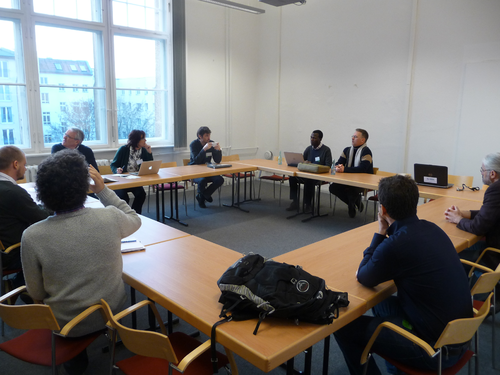
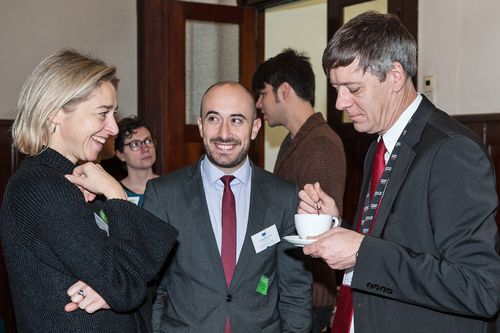
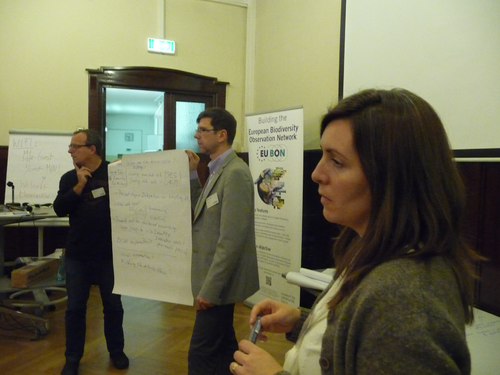
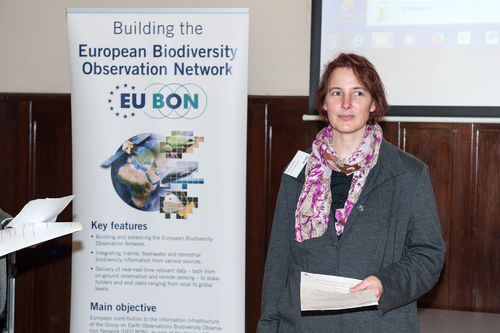




 RSS news
RSS news

